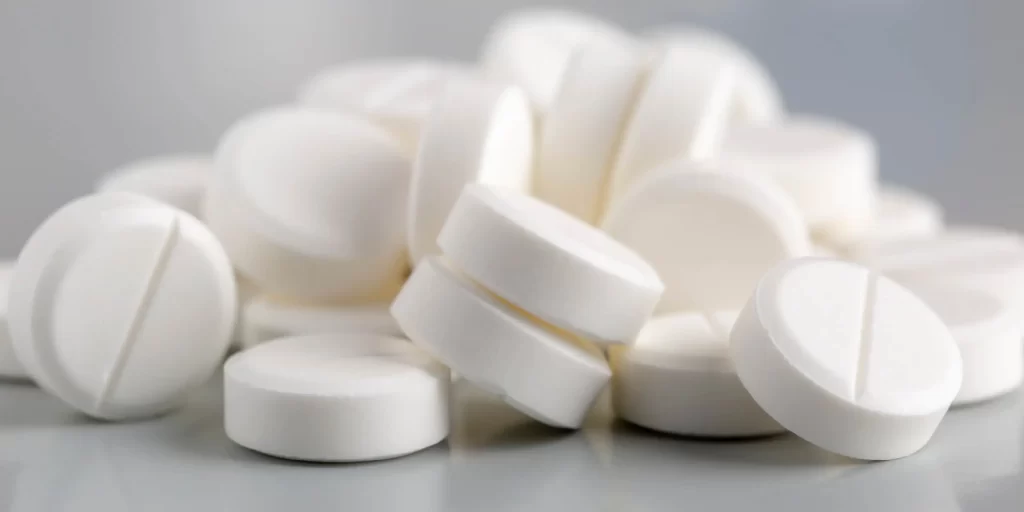How Long Does Methadone Stay in Your System?
Written by Renee Deveney
& Medically Reviewed by Dr. Sarah Dash, PHD
Medically Reviewed
Up to Date
Last Updated - 6/17/2022
View our editorial policy
Often used as a treatment for substance use disorders or chronic pain, methadone is a type of opioid used to control pain and unpleasant symptoms. Although methadone can be a safe treatment when used as prescribed, there are also some risks.
One of the benefits of methadone is that it lasts longer than many drugs. This also means that methadone can stay in your system for a long time, and may be detectable on drug tests for weeks or months.
Duration of Effects of Methadone
The effects of methadone can last between 4–8 hours, with some people only needing to take one dose per day. Methadone can help with pain or withdrawal symptoms for longer than most drugs, but it needs to be closely monitored to avoid toxicity or overdose.
Methadone Half-Life
The duration of methadone’s half-life can be between 30–60 hours. Methadone’s long half-life can increase the risk of overdose since it stays in the body for a longer period of time. It also means that methadone is detectable on drug tests for longer than drugs with a short half-life.
Methadone Screening Detection Times
Methadone detection drug tests are often used to monitor people on methadone maintenance therapy, but can be tested in other circumstances as well. The length of time that methadone is detectable in the system is longer than many other drugs, and can be tested in different ways.
Urine
Testing for methadone in urine is the most commonly used test. Methadone can stay detectable in urine for up to seven days.
Blood
Methadone doesn’t stay in the blood for very long, so blood testing is not the best way to detect methadone use unless it is very recent. Methadone only stays in the blood for several hours, and taking too much in a short time can lead to toxic levels in the blood.
Saliva
The detection time of methadone in saliva is around 24 hours. Saliva tests are less common due to the short window of detection.
Hair
Hair is sometimes used to test a longer window of methadone use. Methadone can show up in hair samples for one week to three months.
Factors Affecting How Long Methadone Stays in Your System
Personal characteristics and pattern of methadone use can impact how long methadone stays in your system. Although there is a range of time that methadone is detectable in the body, this can vary from person to person. Factors that can impact this are:
- Frequency of Use
- Age
- Amount Used
- Overall Health
Methadone doses are closely monitored to avoid abuse and risk of overdose.
False Positives for Methadone Use
In some cases, a false positive drug test for methadone has happened as a result of medication prescribed for a mental health condition. It’s important to note that false positives for methadone are rare, and can be clarified by repeating the test.
How Methadone Is Broken Down in the Body
Methadone is broken down in the body by the liver. Important chemical components known as enzymes help to break down the drug in the body, which makes it inactive. Once it is broken down, the kidney helps to excrete the drug.
If you or a loved one is struggling with a methadone addiction, contact The Recovery Village Ridgefield today to discuss treatment options.
Sources
Substance Abuse and Mental Health Services Administration. “Methadone.” January 8, 2019. Accessed August 3, 2019.
Mayo Clinic Laboratories. “Methadone.” 2019. Accessed August 3, 2019.
Medical Advisory Secretariat. “Optimum Methadone Compliance Testing: An Evidence-Based Analysis.” Ontario Health Technology Assessment Series, 2006. Accessed August 3, 2019.
DrugBank. “Methadone.” August 2, 2019. Accessed August 3, 2019.
Lancelin, Frédérique et al. “False-Positive Results in the Detection of Methadone in Urines of Patients Treated with Psychotropic Substances.” Clinical Chemistry, November 2005. Accessed August 3, 2019.
Laboratory Corporation of America Holdings. “Drug testing options summary.” LabCorp, 2016. Accessed August 3, 2019.
View Sources
Substance Abuse and Mental Health Services Administration. “Methadone.” January 8, 2019. Accessed August 3, 2019.
Mayo Clinic Laboratories. “Methadone.” 2019. Accessed August 3, 2019.
Medical Advisory Secretariat. “Optimum Methadone Compliance Testing: An Evidence-Based Analysis.” Ontario Health Technology Assessment Series, 2006. Accessed August 3, 2019.
DrugBank. “Methadone.” August 2, 2019. Accessed August 3, 2019.
Lancelin, Frédérique et al. “False-Positive Results in the Detection of Methadone in Urines of Patients Treated with Psychotropic Substances.” Clinical Chemistry, November 2005. Accessed August 3, 2019.
Laboratory Corporation of America Holdings. “Drug testing options summary.” LabCorp, 2016. Accessed August 3, 2019.
Authorship






